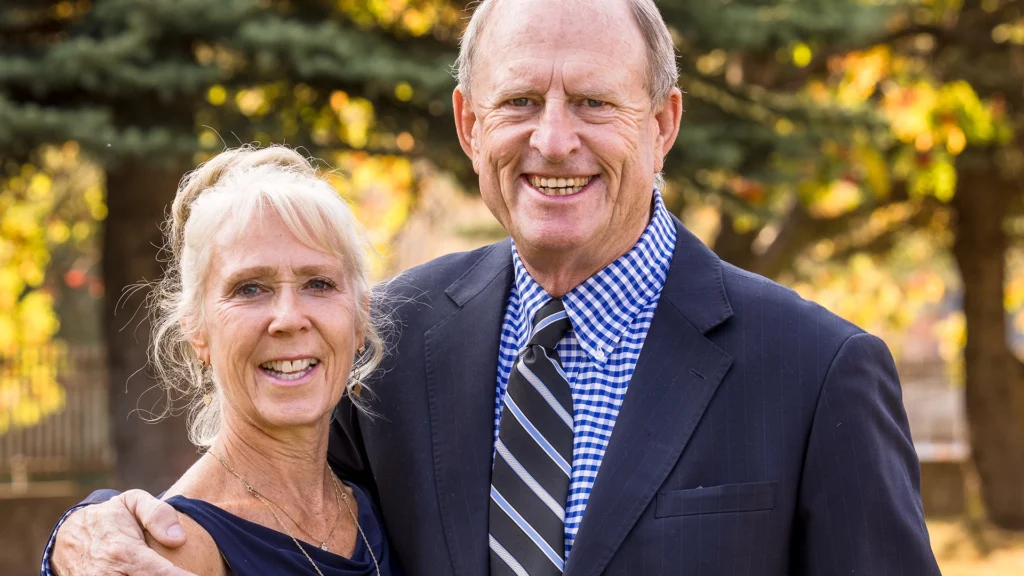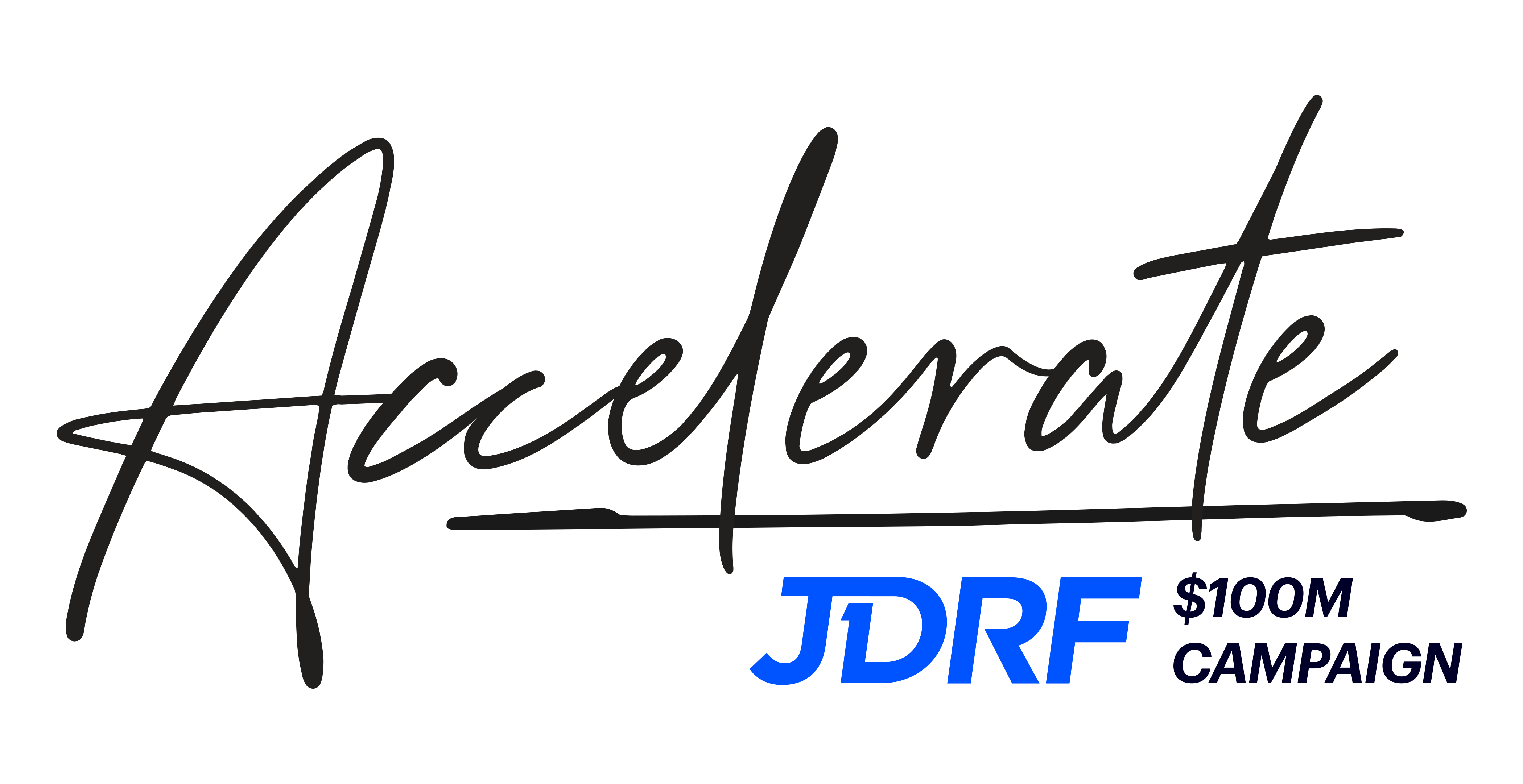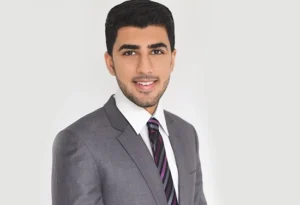
Meet Bonnie Barber from Regina, SK, a resilient mother of seven, valued JDRF donor, and longstanding volunteer leader helping to champion JDRF Canada’s $100M Campaign to Accelerate. Bonnie shares her journey navigating the challenging early moments of her two children’s type 1 diabetes (T1D) diagnoses, how this relentless disease has impacted her family, and what led them to JDRF.
The $100M Campaign to Accelerate is JDRF’s bold fundraising plan to speed up research toward a world without T1D. Our campaign is divided into six key support pillars to help accelerate cures while improving lives. Thanks to devoted JDRF donors and volunteers like Bonnie, this major gift campaign has raised over $78M, funding more T1D research than ever before.

Bonnie’s son, Bryn, was diagnosed with T1D in 1990, shortly after his 5th birthday. There was no known diabetes in their family, and she didn’t know the early signs and symptoms. Bryn hadn’t been feeling well for quite a while and had very little energy. He loved running and playing with his friends at daycare, but Bonnie noticed he was having difficulty keeping up – it was then that she knew something was wrong.
After bringing Bryn to the doctor’s office, they had to go to the lab for a blood test. Bonnie says, “I was really freaked out for this poor little guy. I realized that we had to find out [whether he had T1D], but I just felt so bad for him and, as a mom, challenged to get him through a blood test.”
The doctor called Bonnie to inform her that Bryn’s blood glucose levels were very high. She immediately had to pack an overnight bag and check Bryn into the hospital. At the time, children diagnosed with T1D were typically hospitalized for about one month. Bonnie didn’t want to leave young Bryn on his own, so every morning, she would gather her three other children and head straight to the hospital in pyjamas. Eventually, they all moved into Bryn’s hospital room, trying to make it a fun adventure for the kids. Using the hospital’s playroom and watching TV were little things that went a long way in helping their family get through a difficult time.
“The first little while was very rough,” Bonnie says. “I was just so overwhelmed that I couldn’t take it. I didn’t know how to survive because I thought, ‘This child is going to need all this special care and meals and so much.’ I was treading water as it was with four little ones, and it was a lot.”
Bonnie and her family went home after two weeks, feeling very proud of Bryn. Yet there would be many firsts to face as a mother of a child with T1D – like the first time Bonnie accidentally gave Bryn too much insulin. She panicked, thinking it was all over. Bonnie says there are many traumas she faced in the beginning, but their family slowly got used to life with T1D.
Bonnie’s daughter, Jillian, was also diagnosed (at age 16), but they caught it much sooner because Bonnie knew the symptoms of T1D. Yet, a year later, Jillian was feeling unwell again. They couldn’t figure out why until she was diagnosed with celiac disease, another autoimmune condition that is more common in people with T1D.
Bonnie’s family became involved with JDRF through the JDRF Walk to Cure Diabetes in Regina, SK, two years after Bryn’s diagnosis. As their family learned more about JDRF, they wanted to become more actively engaged as volunteers and supporters. They realized that advancements like insulin pumps, which had made Bryn’s T1D management easier, were made possible in part by JDRF-funded research.
“Thanks to JDRF’s contributions to research, our family is a happy success story,” Bonnie says. “But we still have more work to do. That’s why I decided to join JDRF Canada’s $100M Campaign to Accelerate by helping to fundraise for global research and thanking JDRF’s incredible donors through the Stewardship Cabinet.”
 JDRF also informed Bonnie’s family about studies like TrialNet, which allowed them to screen their five other kids for T1D auto-antibodies. They discovered that their youngest child, Burke, was at a high risk of developing T1D. Thankfully, he is still T1D-free today at age 28 and may have the chance to delay its potential onset with emerging disease-modifying therapies.
JDRF also informed Bonnie’s family about studies like TrialNet, which allowed them to screen their five other kids for T1D auto-antibodies. They discovered that their youngest child, Burke, was at a high risk of developing T1D. Thankfully, he is still T1D-free today at age 28 and may have the chance to delay its potential onset with emerging disease-modifying therapies.
Bonnie’s children are doing well today and have made her a proud grandmother. With fifteen grandkids, Bonnie would like to build on existing research to catch T1D early, keep it at bay, and stop it before it can start so they can live in a world without the disease. She hopes the research will advance so Bryn and Jillian no longer experience highs and lows (blood glucose) or need to monitor their blood glucose levels constantly. Whether through technology like hybrid closed-loop insulin pumps, stem cell transplants or immunotherapies, Bonnie believes we are close to cures.
“We’re on the verge; let’s make it better,” Bonnie says. “The cure for diabetes may not be the common definition of ‘cure,’ but we are so close to people with T1D being able to live independently of technology and insulin. Please know that with your financial assistance, we’ll quickly push this [T1D cure research] over the edge.”
Become part of JDRF’s exceptional community of philanthropists
 Leadership gifts (of $5,000 or more) towards our campaign ensure groundbreaking research advancements to help improve the lives of people with T1D, like Bryn and Jillian, parents like Bonnie, and countless others impacted by this disease.
Leadership gifts (of $5,000 or more) towards our campaign ensure groundbreaking research advancements to help improve the lives of people with T1D, like Bryn and Jillian, parents like Bonnie, and countless others impacted by this disease.
To learn more about how you can make a meaningful investment through our $100 Million Campaign to Accelerate, please contact Kim Lacombe, Vice President of Philanthropy, at kim.lacombe@jdrf.ca.




